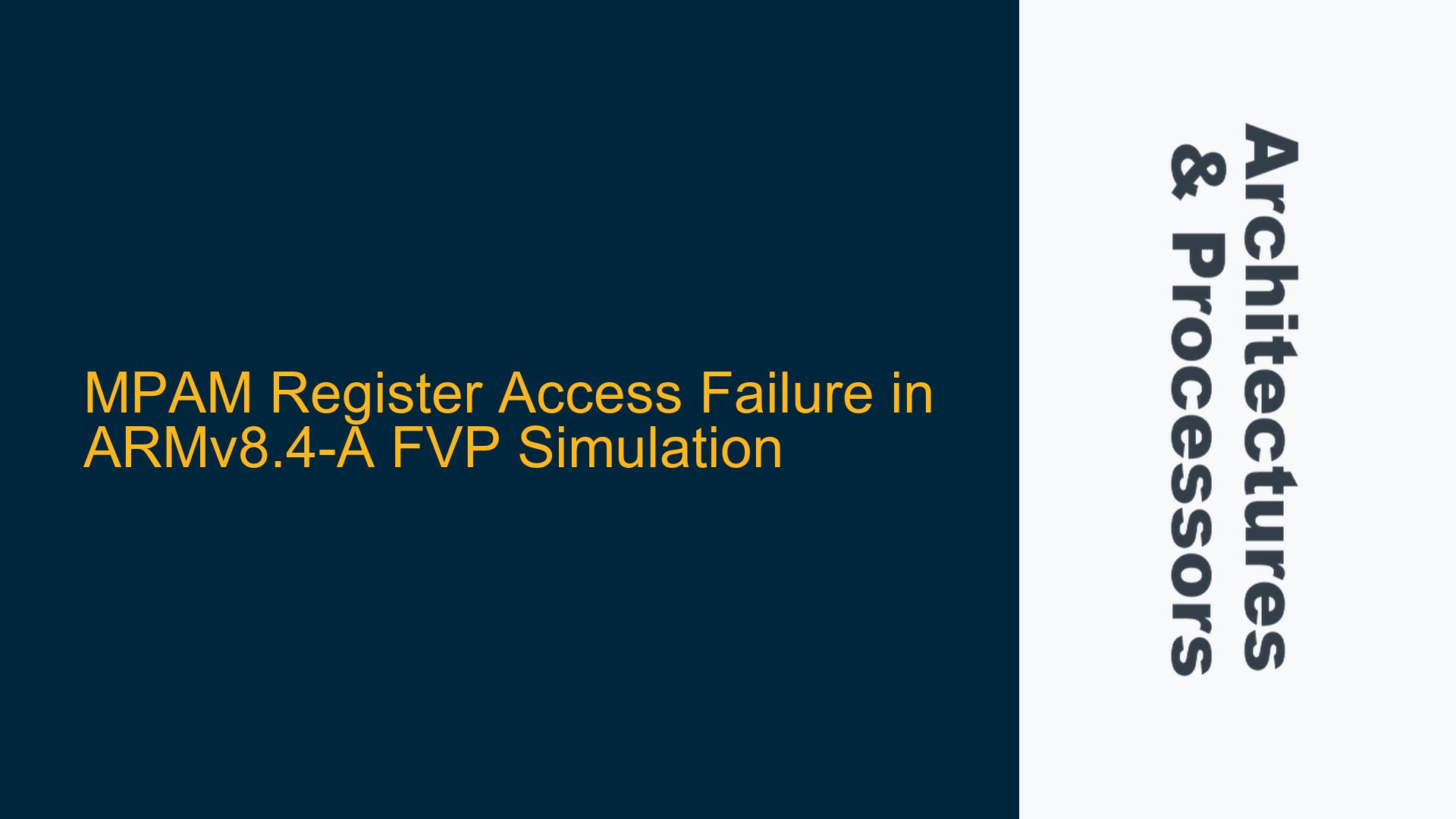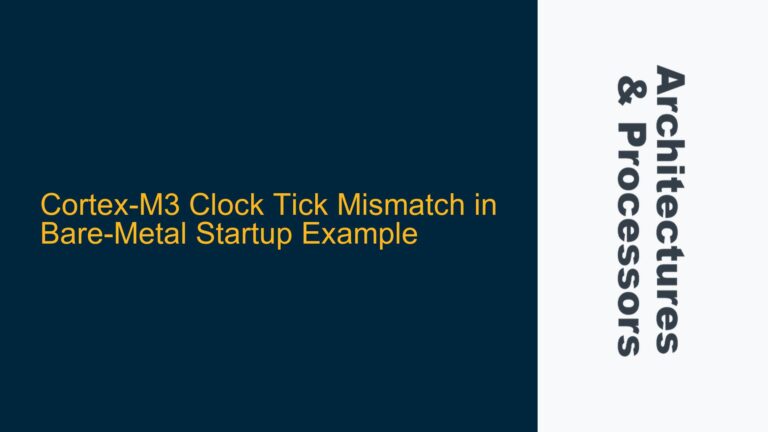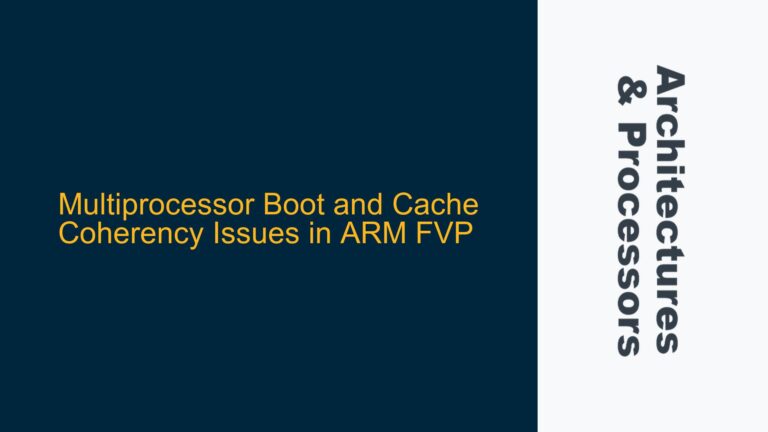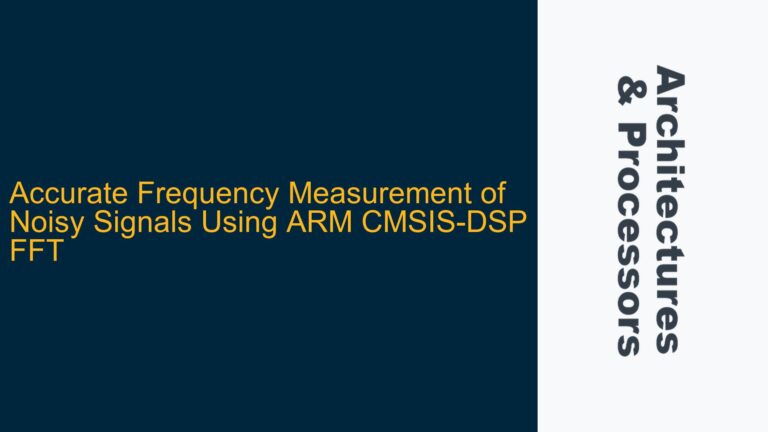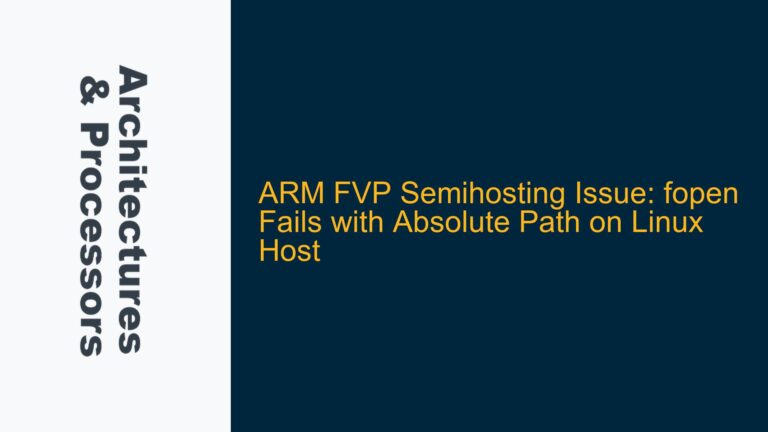MPAM Register Access Ignored During FVP Simulation
The issue at hand involves the inability to access Memory Partitioning and Monitoring (MPAM) registers during a simulation using the FVP_Base_RevC_2xAEMvA model. The user has configured the model with specific parameters to enable MPAM functionality, including setting cluster0.has_mpam=2 and defining CPU affinities and redistributor base addresses. However, when attempting to read or write MPAM registers using MRS and MSR instructions, the program appears to ignore these instructions and continues execution without any apparent effect.
MPAM is a feature introduced in the ARMv8.4-A architecture, designed to provide fine-grained control over memory partitioning and monitoring. This functionality is crucial for systems requiring robust resource management, particularly in multi-core environments where different applications or virtual machines may need isolated memory resources. The failure to access MPAM registers can significantly hinder the development and verification of systems relying on these features.
The problem manifests during the simulation phase, where the expected behavior is that the MRS and MSR instructions should successfully read from or write to the MPAM registers. Instead, the simulation proceeds as if these instructions were never executed, indicating a potential misconfiguration or missing parameter in the FVP setup.
Missing ARMv8.4-A Extension and MPAM Configuration
The root cause of the issue lies in the configuration of the FVP_Base_RevC_2xAEMvA model. Specifically, the model requires explicit enabling of the ARMv8.4-A extensions to support MPAM functionality. The parameter has_arm_v8-4 is disabled by default, and without this setting, the MPAM feature remains inaccessible, regardless of the has_mpam parameter being set to 2.
The ARMv8.4-A extension introduces several new features, including MPAM, which are not available in earlier versions of the ARM architecture. When the has_arm_v8-4 parameter is not enabled, the FVP model does not recognize the MPAM-related instructions, leading to the observed behavior where MRS and MSR instructions are ignored.
Additionally, the configuration of the FVP model must align with the specific requirements of the ARMv8.4-A architecture. This includes ensuring that the CPU affinities and redistributor base addresses are correctly set, as these parameters influence how the MPAM registers are accessed and managed within the simulation environment.
Enabling ARMv8.4-A and Verifying MPAM Functionality
To resolve the issue, the following steps should be taken to ensure that the FVP_Base_RevC_2xAEMvA model is correctly configured to support MPAM functionality:
-
Enable ARMv8.4-A Extensions: The first and most critical step is to enable the ARMv8.4-A extensions by setting the
has_arm_v8-4parameter to 1. This can be done by adding-C cluster0.has_arm_v8-4=1to the FVP command line parameters. This ensures that the FVP model recognizes and supports the MPAM feature. -
Verify MPAM Configuration: After enabling the ARMv8.4-A extensions, it is essential to verify that the MPAM feature is correctly configured. This includes checking that the
has_mpamparameter is set to 2, as specified in the original configuration. Additionally, ensure that the CPU affinities and redistributor base addresses are correctly defined, as these settings are crucial for proper MPAM operation. -
Test MPAM Register Access: Once the FVP model is correctly configured, the next step is to test the access to MPAM registers. This can be done by running a test program that includes MRS and MSR instructions targeting the MPAM registers. The program should be designed to read from and write to these registers, verifying that the expected values are correctly stored and retrieved.
-
Debugging and Validation: If the MPAM register access still fails, further debugging may be required. This includes checking the simulation logs for any errors or warnings related to MPAM or ARMv8.4-A extensions. Additionally, it may be necessary to consult the ARM Technical Reference Manual (TRM) for the specific processor being simulated to ensure that all relevant configuration settings are correctly applied.
-
Optimization and Performance Tuning: Once MPAM functionality is confirmed, it is advisable to optimize the configuration for performance. This may involve adjusting the CPU affinities, redistributor base addresses, or other parameters to ensure that the MPAM feature operates efficiently within the simulation environment.
By following these steps, the issue of MPAM register access being ignored during FVP simulation can be effectively resolved. Ensuring that the ARMv8.4-A extensions are enabled and that the MPAM feature is correctly configured is crucial for the successful development and verification of systems relying on these advanced ARM architecture features.
Detailed Configuration and Verification Process
To provide a more comprehensive understanding of the configuration and verification process, the following table outlines the key parameters and their expected values for enabling MPAM functionality in the FVP_Base_RevC_2xAEMvA model:
| Parameter | Description | Default Value | Required Value for MPAM |
|---|---|---|---|
cluster0.has_arm_v8-4 |
Enables ARMv8.4-A extensions, including MPAM | 0x0 | 0x1 |
cluster0.has_mpam |
Enables MPAM feature within the cluster | 0x0 | 0x2 |
cluster0.NUM_CORES |
Defines the number of cores in the cluster | 1 | 4 |
cluster0.supports_multi_threading |
Enables multi-threading support within the cluster | 0x0 | 0x0 |
cluster0.mpidr_layout |
Defines the MPIDR layout for the cluster | 0x0 | 0x0 |
pctl.startup |
Defines the startup address for the processor | 0.0.0.0 | 0.0.0.0 |
pctl.Affinity-shifted |
Defines the affinity shifting for the processor | 0x0 | 0x0 |
pctl.CPU-affinities |
Defines the CPU affinities for the processor | N/A | ‘0.0.0.0, 0.0.0.1, 0.0.0.2, 0.0.0.3’ |
gic_distributor.CPU-affinities |
Defines the CPU affinities for the GIC distributor | N/A | ‘0.0.0.0, 0.0.0.1, 0.0.0.2, 0.0.0.3’ |
gic_distributor.reg-base-per-redistributor |
Defines the base addresses for the GIC redistributors | N/A | ‘0.0.0.0=0x2f100000,0.0.0.1=0x2f120000,0.0.0.2=0x2f140000,0.0.0.3=0x2f160000’ |
This table provides a clear overview of the necessary configuration changes required to enable MPAM functionality in the FVP_Base_RevC_2xAEMvA model. By ensuring that these parameters are correctly set, the simulation environment will be properly configured to support MPAM register access.
Conclusion
The inability to access MPAM registers during FVP simulation is a significant issue that can hinder the development and verification of ARM-based systems. By understanding the root cause of the problem—missing ARMv8.4-A extensions—and following the detailed configuration and verification steps outlined above, this issue can be effectively resolved. Ensuring that the FVP model is correctly configured to support MPAM functionality is crucial for the successful implementation of advanced ARM architecture features, ultimately leading to more robust and efficient system designs.
